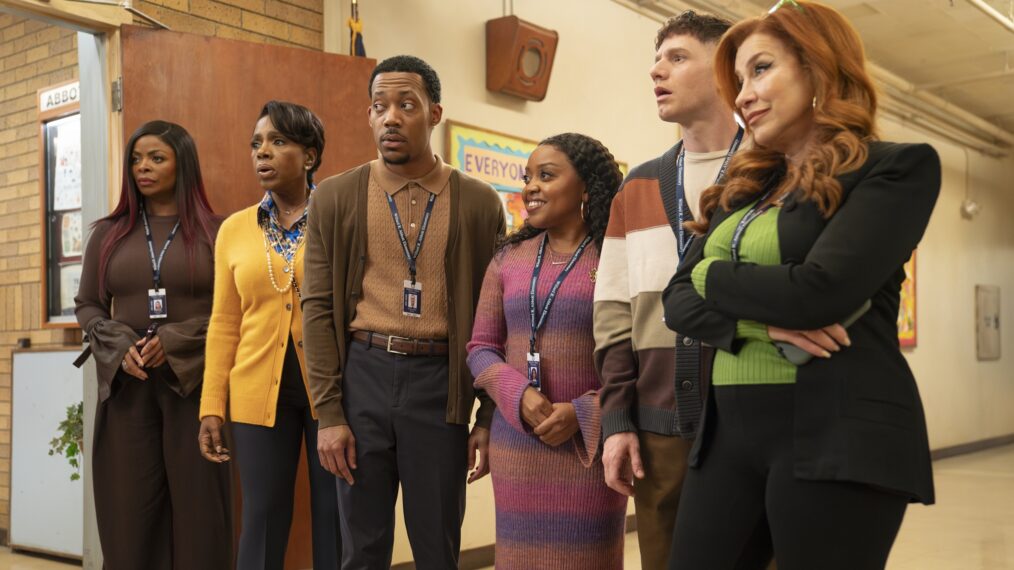To call Baz Luhrmann’s Elvis “detailed” is an understatement. The Warner Bros. musical biopic, which stars Austin Butler as the King of Rock ‘n’ Roll, tracks Presley’s life and career from his beginnings as an average boy from Tupelo, Mississippi, with a beautiful voice and great looks to one of the most important figures in American pop culture history.

Baz Luhrmann
Like Luhrmann’s previous films, including the best picture-nominated musical Moulin Rouge!, Elvis is an epic, kaleidoscopic project and a tribute to the title character’s legacy, told primarily from the perspective of his infamous manager, Colonel Tom Parker (Tom Hanks). It’s also a mashup of cultural references, from Elvis’ own music to contemporary songs by the likes of Doja Cat, Presley’s various performance eras and his fabulous — if fatal — excess once he became one of the most famous men in the world.
“When Elvis was in Hollywood, you couldn’t tell whether his life was a Hollywood movie or a Hollywood movie was his life,” says the Australian director, who brought an outsider’s perspective to tell the story of a very American figure. Describing himself as “an investigative reporter,” Luhrmann — who co-wrote Elvis with Sam Bromell, Craig Pearce and Jeremy Doner — dug into the Presley archives at Graceland to get a sense of a singer who was misunderstood by the general public.
Describing his workplace as “the ultimate mood board,” Luhrmann shares with THR some of the influences and reference points behind his vision of Elvis — the real man and the otherworldly cultural figure he created for himself — which include Presley’s trademark style, from the flashy, bejeweled jumpsuits to the chunky, groovy sunglasses that were both functional and fashionable.
Elvis’ Sunglasses

Elvis’ sunglasses
billyhoiler – stock.adobe.com
“Elvis had glaucoma, and his sunglasses were kind of optical,” says Luhrmann of the functional accessories that were ultimately a signature style for the rock icon. “He may have been the first rock star that began the tradition of wearing sunglasses at night, because rock stars could do that.”
Viva Las Vegas

Viva Las Vegas
Everett Collection
“There’s a historical reference for everything in the movie, but I’ve moved time and place a bit,” explains Luhrmann. One example is Elvis’ Hollywood period in the 1960s, which predated his marriage to Priscilla Presley (pictured with Elvis above). “Priscilla was never in a movie — it’s a fantasy idea,” the director says of scenes in which he imagines her experiencing Presley’s lifestyle as if it were happening in a film like Viva Las Vegas. “He was surrounded by everything he wanted. It was like an Elvis movie.”
Graceland

Graceland
Michael Ochs Archives/Getty Images
While developing the script for Elvis, Luhrmann lived in Memphis and had an office at the mansion once owned by Presley, which is now a site listed on the National Register of Historic Places. “In a way, I felt like an archaeologist or an investigative reporter,” says Luhrmann, who had access to a treasure trove of material on-site that included personal correspondence between Presley and his manager, Colonel Tom Parker, which the director incorporated into the script’s narrative.
Jewelry and Jumpsuits

Courtesy Everett Collection
Luhrmann says his workspace during Elvis‘ development featured giant walls of images — “unbelievable collages of photos of jewelry and [fabric] textures.” The director explains that Presley didn’t have a stylist. “The way he dressed, today we would simply say it was very fluid,” says Luhrmann of how Presley invented the notion of the rock star. “He was inventing his own self.”
This story first appeared in a Jan. stand-alone issue of The Hollywood Reporter magazine. To receive the magazine, click here to subscribe.


























































